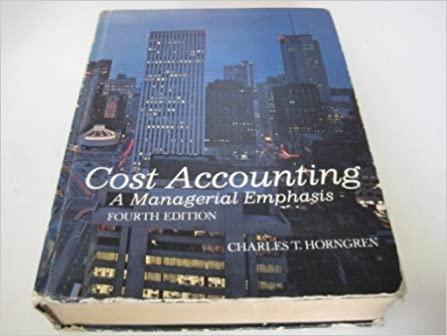Characteristics of Fixed-Overhead Variances The Clive Company is preparing revised standards for the forthcoming year, 19_5. The
Question:
Characteristics of Fixed-Overhead Variances The Clive Company is preparing revised standards for the forthcoming year, 19_5. The standard time allowed for manufacturing one unit of product is thirty minutes. Expected production for 19_5 is 400,000 units of product. Expected fixed factory overhead is
$600,000; expected variable overhead is $2 per standard direct-labor hour.
_ If denominator activity is 200,000 standard hours allowed, what is the fixed factory overhead rate per hour? Graph the budgeted and the applied fixed factory overhead for a volume of 100,000 to 300,000 hours.
. It is the end of 19_5. Compare the effects of three different assumptions regarding actual production:
ACTUAL UNITS OF ASSUMPTION PRODUCT MANUFACTURED
(a) 300,000
(b) 400,000
(c) 500,000 What is the denominator variance for each assumption? Show how the denominator variance would appear on a graph for each assumption. In your own words, define a denominator variance. Why does it arise? Can a denominator variance exist for variable overhead? Why?
_ Assume that the actual fixed overhead for 19_5 was $630,000. What is the budget variance? Are the denominator variances in part 2 affected by this additional information? If so, how? If not, why?
. Return to part 1. What would be the fixed factory-overhead rate per hour if the denominator volume were 100,000 hours? If the denominator volume were 300,000 hours? Draw a graph showing three applied lines for denominator volumes of 100,000, 200,000, and 300,000 hours; indicate the fixed-overhead rate represented by each line. Tabulate the denominator variances that would arise for each of these denominator volumes if actual production were 400,000 units. What are the implications of this part regarding the setting of productcosting rates for fixed overhead?
Step by Step Answer:





